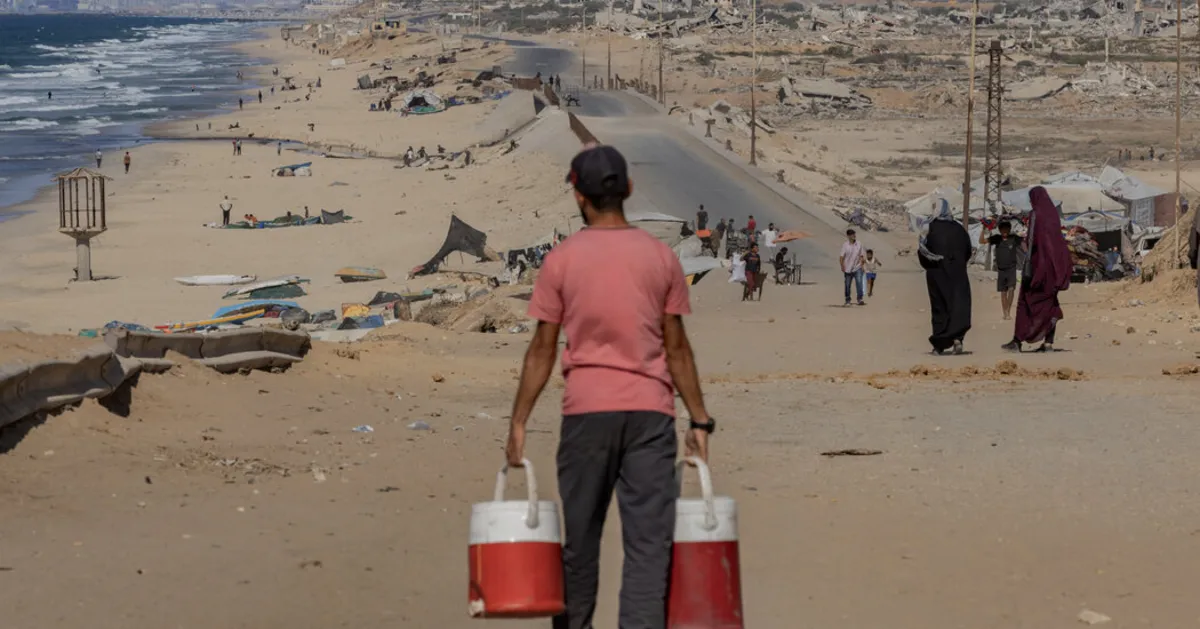
Hamas has announced that a new agreement could pave the way for a cessation of hostilities in Gaza and prompt Israel's withdrawal from the territory. In a statement, the militant group urged former President Donald Trump and international figures to pressure Israel into fulfilling the terms of the agreement. Both Hamas and Qatar, a key negotiator in the discussions, asserted that the deal would also facilitate the delivery of humanitarian aid into Gaza. However, the finer details regarding the exchange of hostages for prisoners and the specifics of Israel's troop withdrawal remain ambiguous.
Initial reactions from Israel did not indicate plans for a troop pullback. Israeli Prime Minister Benjamin Netanyahu reassured that all remaining Israeli hostages would be returned home, though he refrained from providing additional details. The Gaza war erupted in October 2023 following a deadly attack by Hamas, which resulted in approximately 1,200 Israeli fatalities and the abduction of around 250 hostages. The Israeli military's subsequent operations have reportedly claimed over 67,000 Palestinian lives, as documented by the Gaza health ministry, while devastating the region's infrastructure.
In late September, Trump introduced a comprehensive 20-point plan aimed at ending the conflict and securing the release of hostages. This plan proposed an exchange where Israeli hostages would be swapped for 250 Palestinian prisoners serving life sentences and 1,700 Gazans detained during the ongoing hostilities. An anonymous official familiar with the negotiations indicated that all living hostages, estimated to be around 20, are expected to be released simultaneously, possibly on Sunday. Additionally, the remains of up to 28 deceased hostages will be returned gradually.
Despite these developments, uncertainty looms over whether the war will genuinely conclude. Hamas has openly dismissed Netanyahu’s demands for disarmament, and no discussions regarding Hamas's weapons have emerged in public statements from Israel, Qatar, the United States, or Hamas itself.
Many Palestinians in Gaza have received news of the agreement with optimism, hoping it might signal an end to their prolonged suffering. Montaser Bahja, an English teacher displaced in Khan Younis, expressed mixed emotions, stating he felt “joy for the end of the war and the killing, and sorrow for everything we’ve lost.” Residents are now eagerly awaiting updates on the potential implementation of a truce.
Trump’s ultimatum to Hamas on Friday warned that the deaths of more fighters would follow if a deal was not reached by Sunday evening. In response, Hamas consented to release all hostages, both living and deceased, while seeking to negotiate specific elements of the plan. That evening, Trump expressed belief in Hamas’s readiness for a lasting peace and called for an end to Israeli air strikes on Gaza.
The situation escalated following an Israeli airstrike on September 9, targeting Hamas representatives in Qatar, which incited frustration among U.S. officials and complicated diplomatic efforts. Qatar's Prime Minister, Sheikh Mohammed bin Abdulrahman al-Thani, condemned the strike as an attempt to “sabotage every attempt to create opportunities for peace.” This incident ultimately motivated Trump and his advisors to exert pressure on Netanyahu to endorse a framework for conflict resolution.
On September 23, at the United Nations General Assembly, Trump and his Middle East envoy, Steve Witkoff, convened a meeting with senior officials from Arab and Muslim-majority nations to outline their peace plan. This meeting followed a U.N. conference where several nations recognized Palestinian statehood, reflecting a growing international consensus on the need for a resolution to the conflict. Faced with increasing isolation, Netanyahu found it increasingly difficult to oppose Trump.
During a White House meeting on September 29, Trump unveiled the 20-point plan, which aimed to facilitate the release of remaining hostages and establish governance for a post-war Gaza. Following the announcement, Netanyahu reached out to the Qatari Prime Minister to apologize for the earlier airstrike, signaling a willingness to engage in diplomatic dialogue.
Trump's proposal includes provisions for a significant overhaul of Gaza's governance, calling for Hamas to disarm and a transition to a technocratic Palestinian committee. The plan envisions a “de-radicalized terror-free zone” in Gaza, with oversight from an international board including Trump and former British Prime Minister Tony Blair. This board aims to facilitate the redevelopment of Gaza, ensuring it does not pose a threat to neighboring nations.
Moreover, the proposal outlines the establishment of a special economic zone in Gaza, promoting investment and development opportunities. The plan emphasizes voluntary relocation options for Gazans, abandoning earlier, controversial suggestions of forced resettlement. Additionally, it suggests the formation of an “International Stabilization Force” to support local police forces and secure border areas.
As discussions progress, questions remain regarding the fate of the hostages still in Gaza. Reports indicate that around 20 living hostages remain, alongside the bodies of approximately 25 deceased individuals. Trump’s cease-fire proposal had initially called for the release of all hostages within 72 hours of Israel accepting the plan, but the timing now appears uncertain.
Many of the original hostages have been freed in previous exchanges or military operations, but the fate of those still unaccounted for raises ongoing concerns. The Trump plan indicates that Israel would release 250 life sentence prisoners and 1,700 Gazans detained since the outbreak of the conflict in exchange for the hostages, but the timeline for these releases remains unclear.